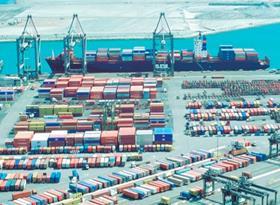
The eight-day union strike at the Port of Los Angeles and the Port of Long Beach, which has affected both imports and exports, has ended following the reaching of an agreement between all parties, according to a press release from the Port of Los Angeles.
The deal was announced last night (Tuesday) by Los Angeles Mayor Antonio Villaraigosa, who noted that the stand-off has cost the economy “billions of dollars”.
The strike began on 27 November when the 800-member International Longshore and Warehouse Union’s Office Clerical Unit (OCU) set up picket lines at 10 of the 14 container terminals at the two ports.
Longshoremen apparently refused to cross those picket lines, leading to over 10,000 longshoremen and other union members honouring the strike.
Although other terminals have remained open and in operation, some fresh fruits and vegetables have reportedly been held up at the ports as a result of the strike action.
According to Lloyds Loading List.com, the OCU and harbour employers have been negotiating for more than two years over wages, benefits and job security.
“I would like to thank both the employers and the union for returning to the bargaining table in earnest beginning last night and working feverishly to reach a new deal,” Mayor Villaraigosa said in the press release.
“The result is a contract amenable to both sides and the return to work during this holiday season for thousands of men and women who are vital to keeping our port running around the clock.”
Mayor Villaraigosa also expressed thanks to the federal mediators who quickly flew to Los Angeles on Tuesday prepared to work with both sides to reach an agreement.
With the strike now ending, Mayor Villaraigosa said no time must be wasted in getting the nation’s busiest port complex’s operations “back up to speed“.
Port of Los Angeles executive director Geraldine Knatz also expressed the facility’s gratitude to Mayor Villaraigosa for his “leadership and tenacity“ in keeping the negotiations moving.
“The days ahead will be busy, but we look forward to seeing a workforce of thousands back on the job and returning this complex to business as usual,” Knatz noted.



